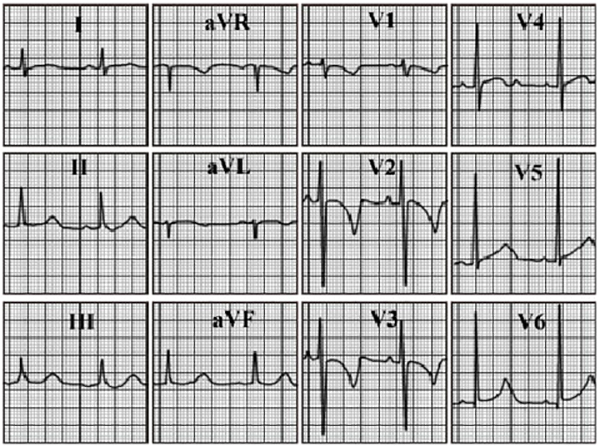You are incorrect - the best interpretation of the electrocardiogram in our patient is right ventricular hypertrophy and right axis deviation.
Your choice: Anteroseptal ischemia / injury
The characteristic feature demonstrated here is seen in the precordial leads, specifically, the deep T wave inversion in leads V1 to V3. Ischemic T wave changes are often transient. If they persist, they may be the result of prolonged ischemia, as may be seen with unstable angina or a non-Q wave infarction. Cardiac biomarkers would be necessary to differentiate between these two possibilities.
